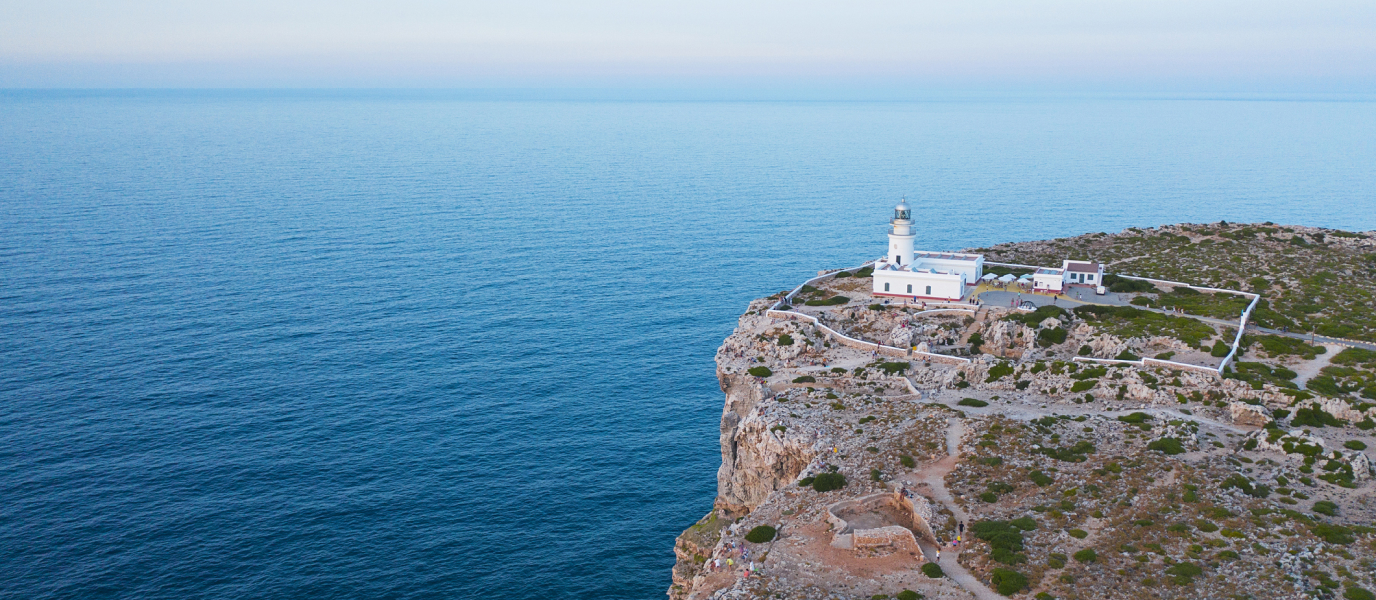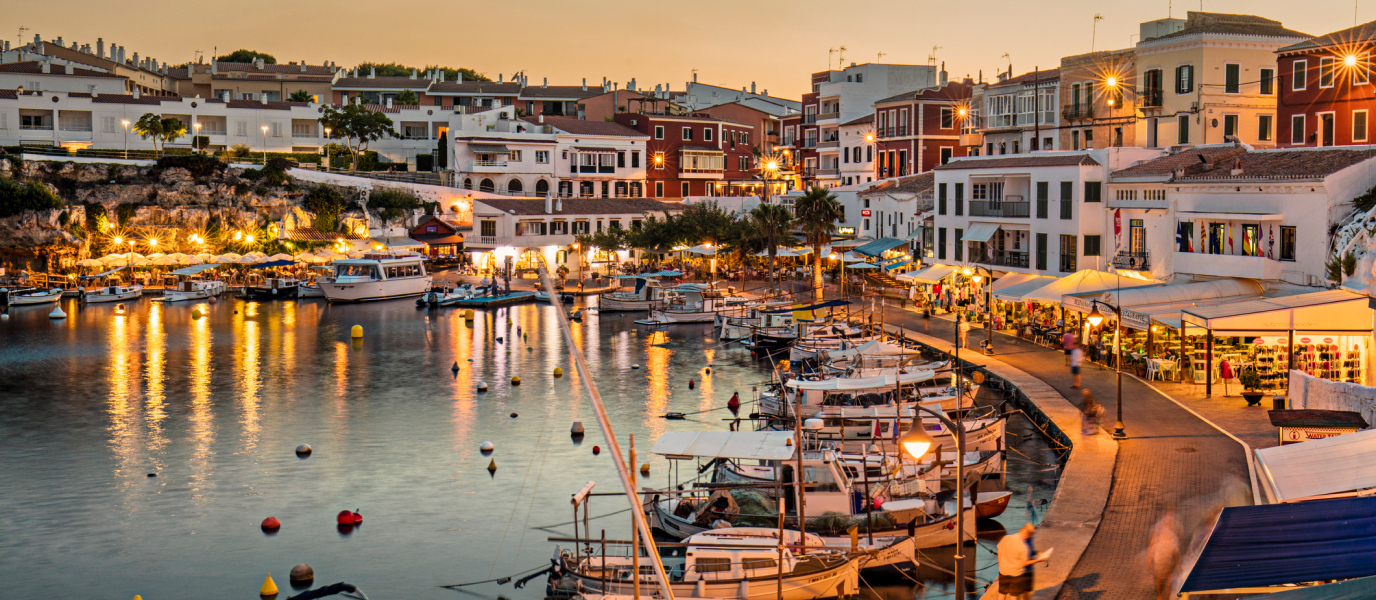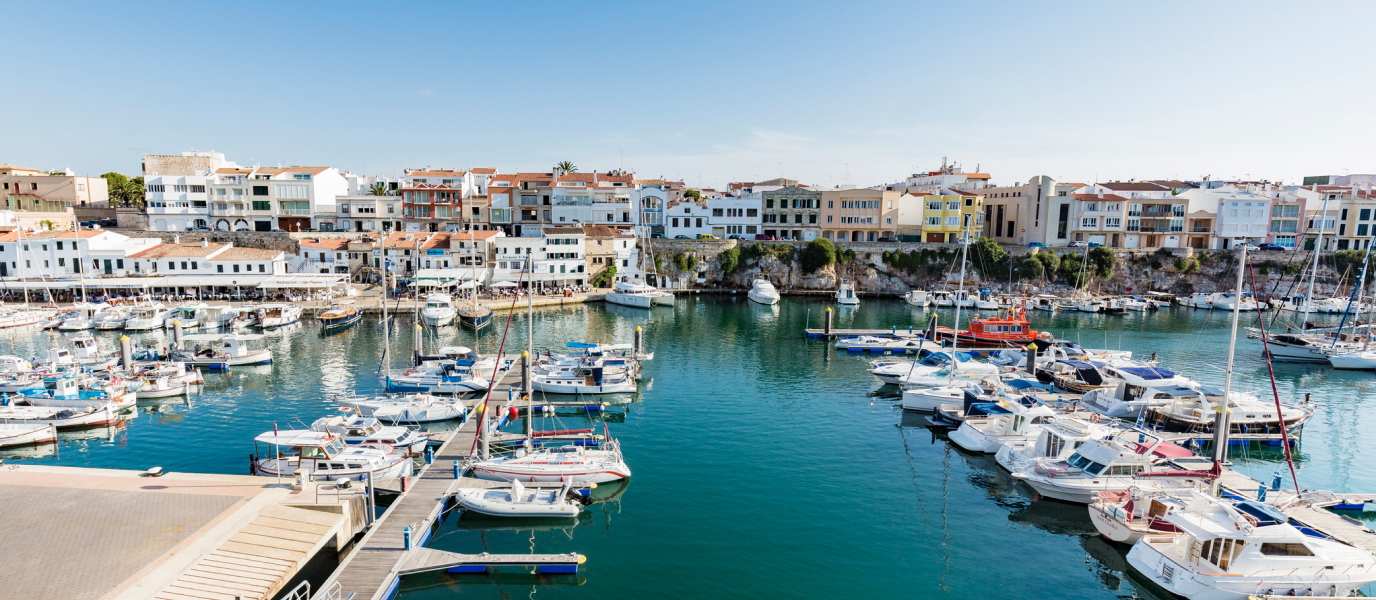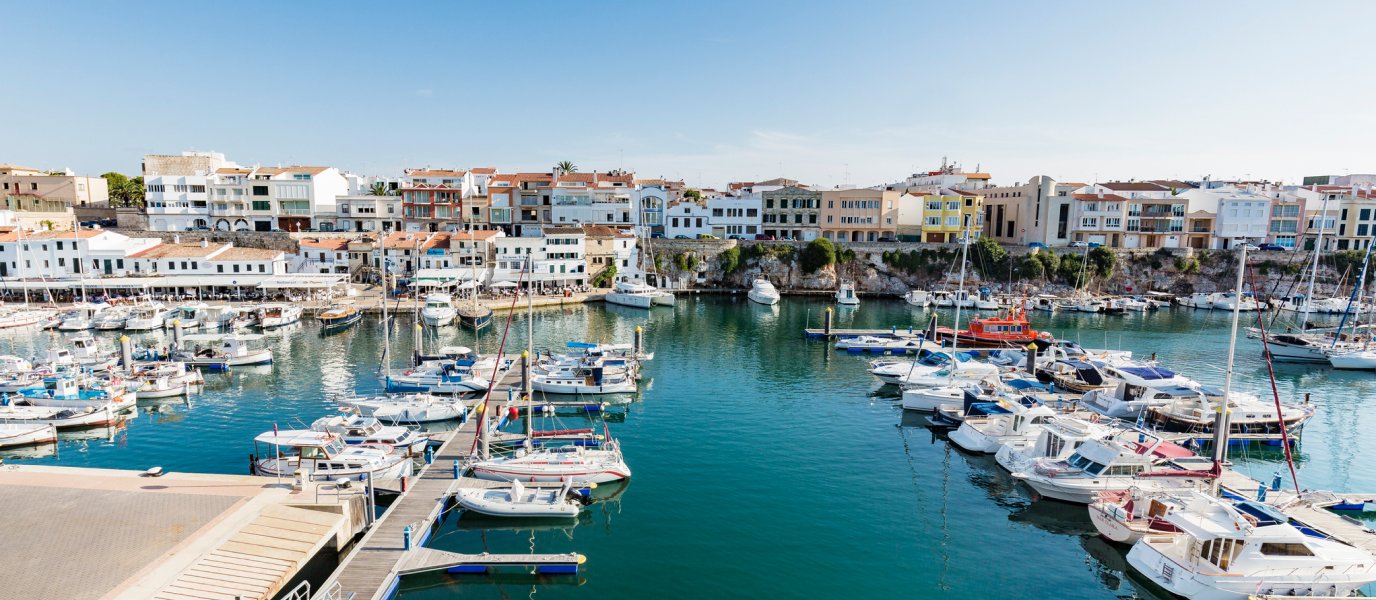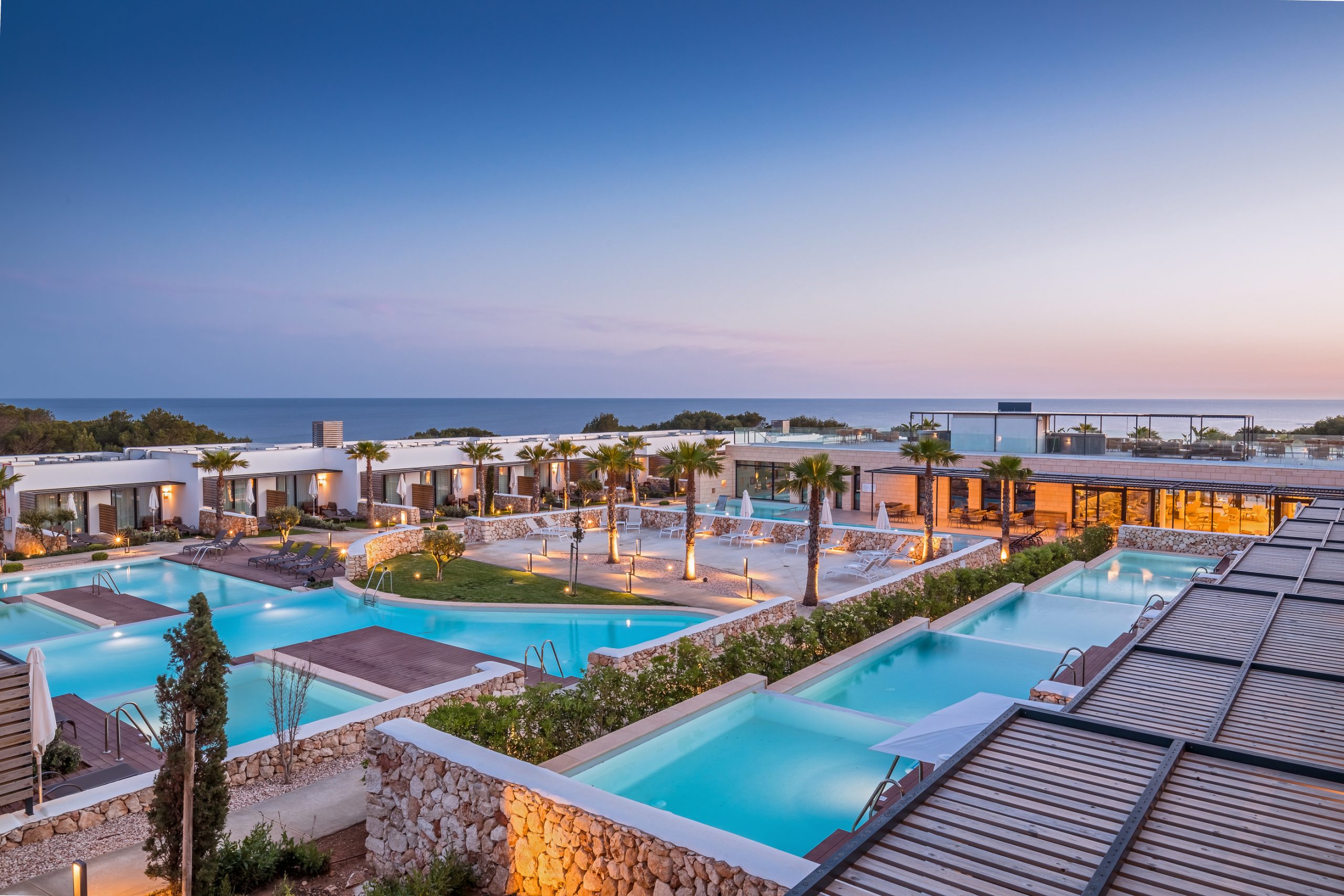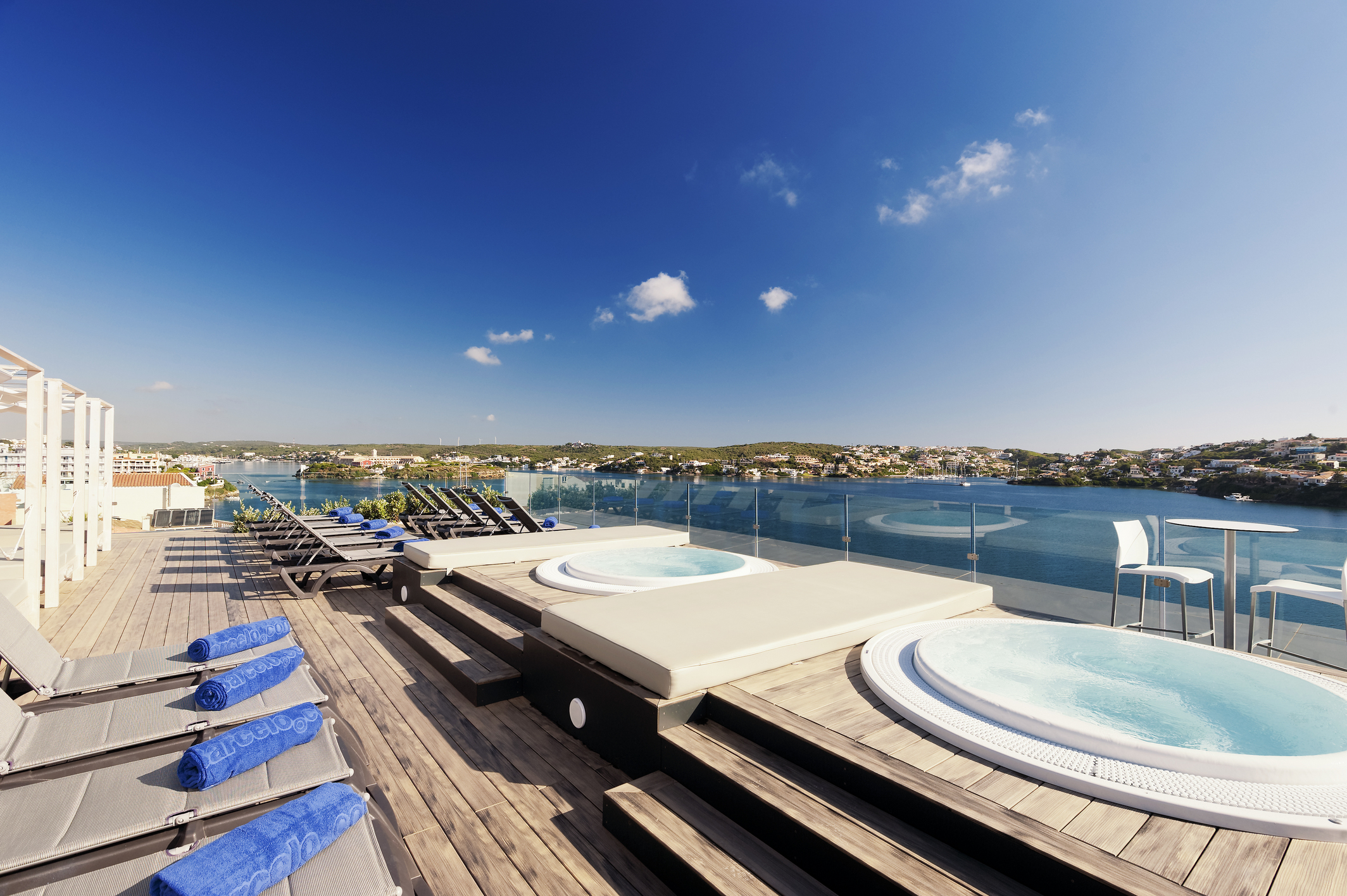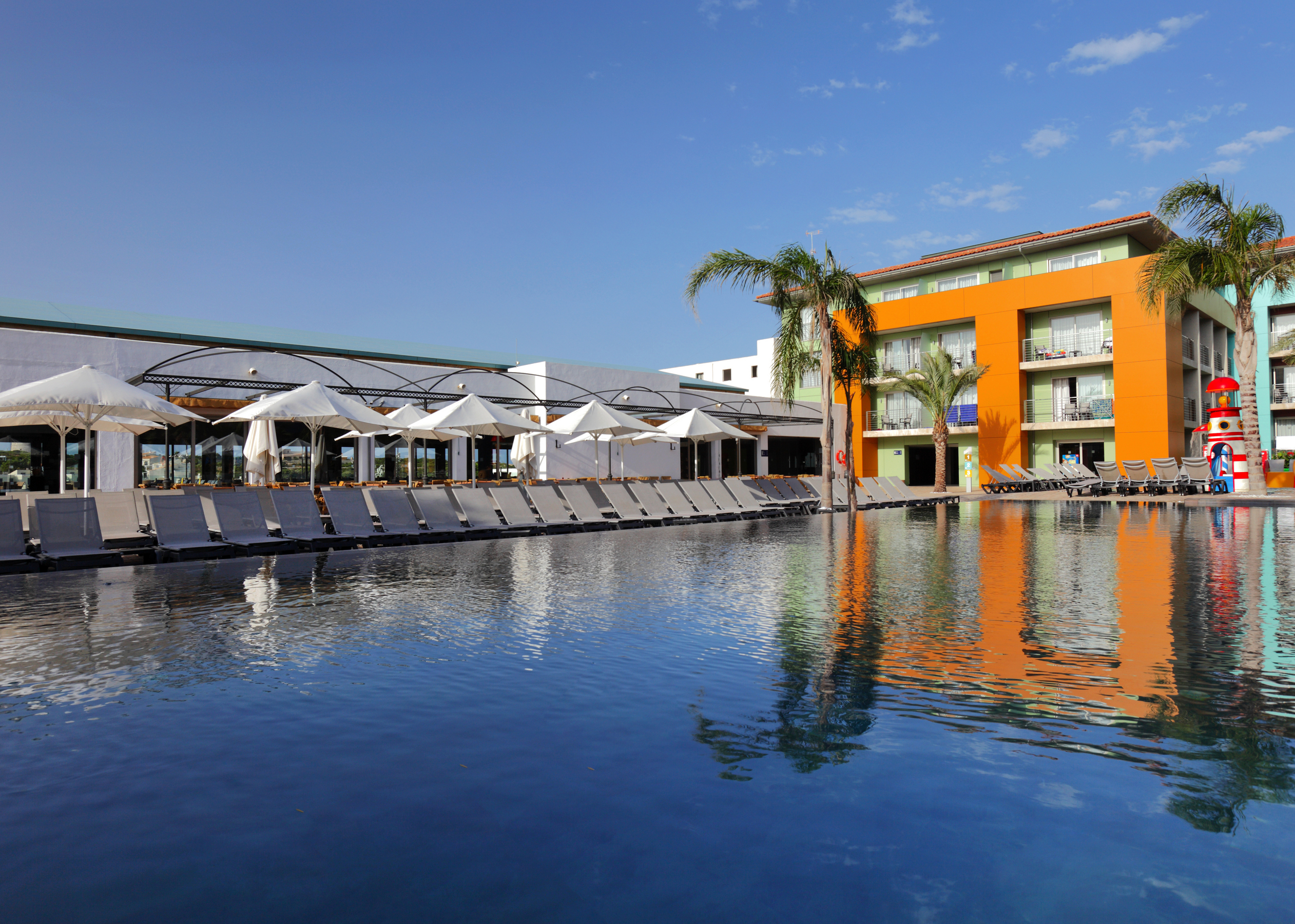Minorca’s lighthouses command great interest from tourists recently arrived on the island, sometimes even before they have actually landed there. This is because those who are lucky enough to catch a view of the island’s geography from the window of their aircraft—in other words, a bird’s-eye view—are unlikely to forget how tongues of land project out into the Mediterranean and how, at the ends of those, where the sea swell batters the cliffs, stand these majestic structures whose task it is to cast an intermittent light and to guard the safety of shipping.
Their location in secluded points along the wildest parts of the coast, the Mediterranean Sea’s hues of deep blues and turquoise, the mystery and romance that always surrounds this type of building… it all combines to generate an atmosphere of enchantment around Minorca’s lighthouses. If you’d like to know what we’re talking about, take note. In this article, we tell you all you need to know before you set off for the finest lighthouses of this pretty Balearic island.
The Cavalleria lighthouse
We’ll begin our tour of the island’s 7 lighthouses with the oldest of them. Located in the northernmost part of Minorca on the Cape of Cavalleria, this lighthouse stands 94 metres above sea level on a beautiful cliff top. This explains why the height of the structure itself—15 metres—is one of the lowest of Minorca’s lighthouses, because the terrain gives it the height required for a watchtower—essential if shipping is to be able to identify it from a distance of 22 nautical miles. Therefore, the attraction of the Cavalleria lighthouse does not so much lie in the spectacular nature of the building itself, but rather in the beauty of its setting, a rocky peninsula jutting out into the sea—perfect for watching unforgettable sunsets.
Opened in 1857, this particular lighthouse was built to put an end to the long list of shipwrecks that had occurred to the north of the island, which totalled, according to local records, over 700 since the sixteenth century. The Cavalleria lighthouse was the last on the island to stop running on oil—the traditional fuel for lighthouses—as it did not have an electricity supply until the 1980s.
The lighthouse is located 14 kilometres from Es Mercadal and Fornells—in other words, a 30-minute drive away. If you decide to visit the lighthouse to watch the sunset, make sure that you allow enough time for the journey; the local roads are not exactly motorways and during the summer months, there can be significant hold-ups. In any case, we can assure you that any inconveniences experienced en route will soon be forgotten as you watch the sun disappearing into the waters of the Mediterranean.
The Favàritx and the Punta Nati lighthouses
Unfortunately, the construction of the Cavalleria lighthouse did not put an end to shipwrecks off the north coast of Minorca. So the authorities decided to build two more:
- The Favàritx lighthouse. Built between 1917 and 1922, this is one of the most visited lighthouses on the island. One reason is the beauty of the building itself—its characteristic tower is 28-metre high, and it is painted in diagonal black and white bands—but also its setting, as it is located in the most humid part of the island, in the heart of the S’Albufera des Grau natural park, just a short distance from some of the most beautiful coves of northern Minorca, such as Cala Tortuga and Cala Presili. In addition, inside the building you can find an exhibition about maritime signals.
- The Punta Nati lighthouse. While, as we said, the Favàritx lighthouse is located in the most humid part of the island, the Punta Nati lighthouse is to be found in what is known as ‘dry Minorca’. Its construction was to a great extent the result of pressure from the French government following the shipwreck of the Général Chanzy in 1910. And so, three years later, the lighthouse opened. It is distinctive in that its aesthetic contrasts greatly with the others: it consists of two stonework structures, between which stands a stone tower with a hexagonal floor plan. It is located only six kilometres from Ciutadella, in a desert-like landscape from which the coast of Majorca can be seen in the distance.
Other Minorca lighthouses
Although so far we have concentrated on what most would consider the island’s particularly attractive lighthouses, Minorca does have four others:
- The Artrutx lighthouse. Located 7 kilometres from Ciutadella—but in this case towards the south—, the Artrutx lighthouse, unlike those already mentioned, is positioned near an urban area. It may be of interest to know that what was once the lighthouse keeper’s residence is now a restaurant. Furthermore, it is situated just a short distance from some of the south’s finest coves—such as Turqueta and Macarella—and from some of the best surfing spots: the coves of Cala en Bosch and Son Xoriguer.
- The Aire Island lighthouse. The tallest of all Minorca’s lighthouses stands on an uninhabited islet in the far south-east of the island. For this reason, visitors usually view it from the beach at Punta Prima, although it is perfectly possible to access the islet by boat. The islet, incidentally, is home to the black lizard, a species endemic to Minorca.
- The Sant Carles or Mahón lighthouse. The old lighthouse at the port of Mahón was unfortunately demolished in order to make way for a military exercise zone. In its place, there now stands a metal tower devoid of any great interest.
- The Sa Farola lighthouse. Also known as the Ciutadella lighthouse, this can be reached by taking a pleasant walk around Ciutadella’s port estuary. This enjoyable, 20-minute stroll is also one of the stages of the Camí de Cavalls, a historic, 185-kilometre-long path which follows the coastline all the way around the island.
As you see, you can find a lighthouse at each of the furthest points of Minorca. So you have no excuse to leave without having visited at least one of them!





























































